Distinct Patterns of GR Transcriptional Regulation in Liver and Muscle of LPS-Challenged Weaning Piglets
- PMID: 35897645
- PMCID: PMC9331734
- DOI: 10.3390/ijms23158072
Distinct Patterns of GR Transcriptional Regulation in Liver and Muscle of LPS-Challenged Weaning Piglets
Abstract
Glucocorticoid receptor (GR), which is ubiquitously expressed in nearly all cell types of various organs, mediates the tissue-specific metabolic and immune responses to maintain homeostasis and ensure survival under stressful conditions or pathological challenges. The neonatal period is metabolically demanding, and piglets are subjected to multiple stressors in modern intensive farms, especially around weaning. The liver is more responsive to LPS challenge compared to muscle, which is indicated by significantly increased TLR4 and p-p65, TNF-α, and IL-6 levels in association with GR down-regulation at both mRNA and protein levels. GR binding to the putative nGRE on TNF-α and IL-6 gene promoters decreased in the liver, but not muscle, upon LPS stimulation. The transcriptional regulation of GR also showed striking differences between liver and muscle. GR exon 1 mRNA variants 1-4, 1-5, and 1-6 were down-regulated in both liver and muscle, but a significant up-regulation of GR exon 1-9/10 mRNA variants abolished the change of total GR mRNA in the muscle in response to LPS stimulation. The significant down-regulation of GR in the liver corresponded with significantly decreased binding of p-GR and diminished histone acetylation in GR gene promoters. These results indicate that tissue-specific GR transcriptional regulation is involved in the differential inflammation responses between liver and muscle.
Keywords: GR; liver; muscle; pig; tissue specificity; transcriptional regulation.
Conflict of interest statement
The authors declare no conflict of interest.
Figures
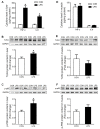
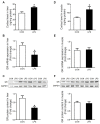
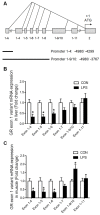
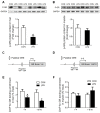
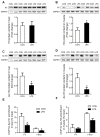


Similar articles
-
Porcine glucocorticoid receptor (NR3C1) gene: tissue-specificity of transcriptional strength and glucocorticoid responsiveness of alternative promoters.J Steroid Biochem Mol Biol. 2014 May;141:87-93. doi: 10.1016/j.jsbmb.2014.01.012. Epub 2014 Feb 3. J Steroid Biochem Mol Biol. 2014. PMID: 24503296
-
Breed-dependent transcriptional regulation of 5'-untranslated GR (NR3C1) exon 1 mRNA variants in the liver of newborn piglets.PLoS One. 2012;7(7):e40432. doi: 10.1371/journal.pone.0040432. Epub 2012 Jul 5. PLoS One. 2012. PMID: 22792317 Free PMC article.
-
Asparagine attenuates hepatic injury caused by lipopolysaccharide in weaned piglets associated with modulation of Toll-like receptor 4 and nucleotide-binding oligomerisation domain protein signalling and their negative regulators.Br J Nutr. 2015 Jul;114(2):189-201. doi: 10.1017/S0007114515001476. Epub 2015 Jun 16. Br J Nutr. 2015. PMID: 26079268
-
p53 cooperates with Sp1 to regulate breed-dependent expression of glucocorticoid receptor in the liver of preweaning piglets.PLoS One. 2013 Aug 7;8(8):e70494. doi: 10.1371/journal.pone.0070494. eCollection 2013. PLoS One. 2013. PMID: 23950944 Free PMC article.
-
Tissue specific glucocorticoid receptor expression, a role for alternative first exon usage?Biochem Pharmacol. 2006 Nov 30;72(11):1529-37. doi: 10.1016/j.bcp.2006.07.005. Epub 2006 Aug 22. Biochem Pharmacol. 2006. PMID: 16930562 Review.
Cited by
-
Heat-Induced Secretion of Heat Shock Proteins 70 and 90 Does not Affect the Expression of the Glucocorticoid Receptor in Primary Airway Cells in COPD.Lung. 2024 Jun;202(3):235-243. doi: 10.1007/s00408-024-00680-8. Epub 2024 Apr 19. Lung. 2024. PMID: 38641747 Free PMC article.
References
-
- Carrillo-de Sauvage M.A., Maatouk L., Arnoux I., Pasco M., Sanz Diez A., Delahaye M., Herrero M.T., Newman T.A., Calvo C.F., Audinat E., et al. Potent and multiple regulatory actions of microglial glucocorticoid receptors during CNS inflammation. Cell Death Differ. 2013;20:1546–1557. doi: 10.1038/cdd.2013.108. - DOI - PMC - PubMed
MeSH terms
Substances
Grants and funding
LinkOut - more resources
Full Text Sources
Research Materials

